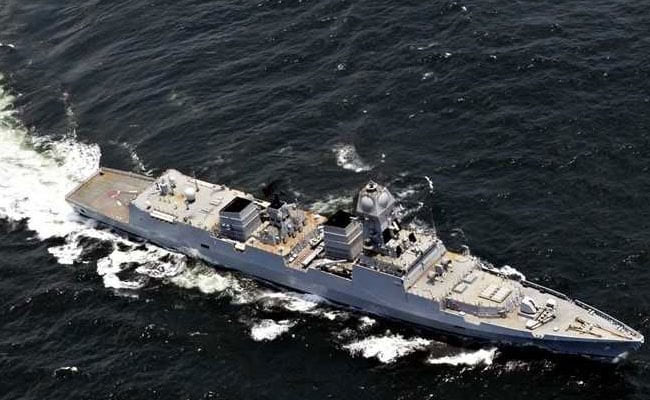Navy Officers Board Indian Crude Oil Carriers Amid Persian Gulf Tension
Indian Navy destroyer INS Chennai (in picture), and others are mission deployed in the region. Teams would escort crude oil tankers in and out of the Straits of Hormuz. Teams will fly onto tankers if they have chopper deck or embark by boat. The Indian Navy plans to deploy an officer and 2 sailors onboard the Indian crude oil tankers operating in the Persian Gulf.
New Delhi: June 22, 2019
With the distinct possibility of a military conflict between the United States and Iran, the Indian Navy is set to embark officers and sailors onboard Indian crude oil carriers which enter and exit the Persian Gulf.
On Thursday, Iran shot down a sophisticated US unmanned aerial vehicle over what it says is its territory, detail contested by the US which says that the drone was flying over international airspace. The drone was downed in the Strait of Hormuz, officials said. The shoot down prompted the US President Donald Trump to say that “Iran made a mistake”. In retaliation, he called for an attack on Iran, but called it off just hours before strikes were to be launched.
Iran today said it had “indisputable” evidence that the drone had violated its airspace. This has further escalated tensions between the two countries after a series of attacks on tankers the US has blamed on Tehran.
Indian crude oil carriers, five to eight in number, including Ultra Large Crude Carriers (in picture) enter and exit the Persian Gulf every day
NDTV has learned that the Indian Navy plans to deploy an officer and 2 sailors onboard the Indian crude oil tankers operating in the Persian Gulf. These teams would escort Indian crude oil tankers in and out of the Straits of Hormuz. Indian Navy teams will fly onto the tankers if they have a helicopter deck or embark them by boat.
Tension in the Gulf
Videographic locating recent incidents in the Gulf region. Iran’s Revolutionary Guard said on Thursday it had shot down a US “spy drone” which violated Iranian airspace near the Strait of Hormuz. The incident comes at a time of growing antagonism …
Indian crude oil carriers, around five to eight in number, including Ultra Large Crude Carriers enter and exit the Persian Gulf every day and play a critical role towards meeting India’s energy security requirements. Around 63.29% of India’s crude oil flows come from the Gulf with Iraq, Saudi Arabia, the UAE, Kuwait and till recently Iran being key partner nations in the region.
Movement of all these ships is being monitored from the Navy’s Information Fusion Centre. In picture: Very Large Crude Carrier
The Director General of Shipping, the Indian Ship Owners Association and the Indian Navy are meeting this afternoon to discuss the situation. On June 13 and June 16, the Director General of Shipping had issued two advisories to all Indian flagged vessels operating in the Strait of Hormuz to take appropriate protection measures. The movement of all these ships is being monitored from the Navy’s Information Fusion Centre in Gurugram, Haryana.
The Indian Navy destroyer INS Chennai and Offshore Patrol Vessel INS Sunayna are mission deployed in the region presently and Indian Navy aircraft are also involved in aerial surveillance in the region.
Courtesy: NDTV

